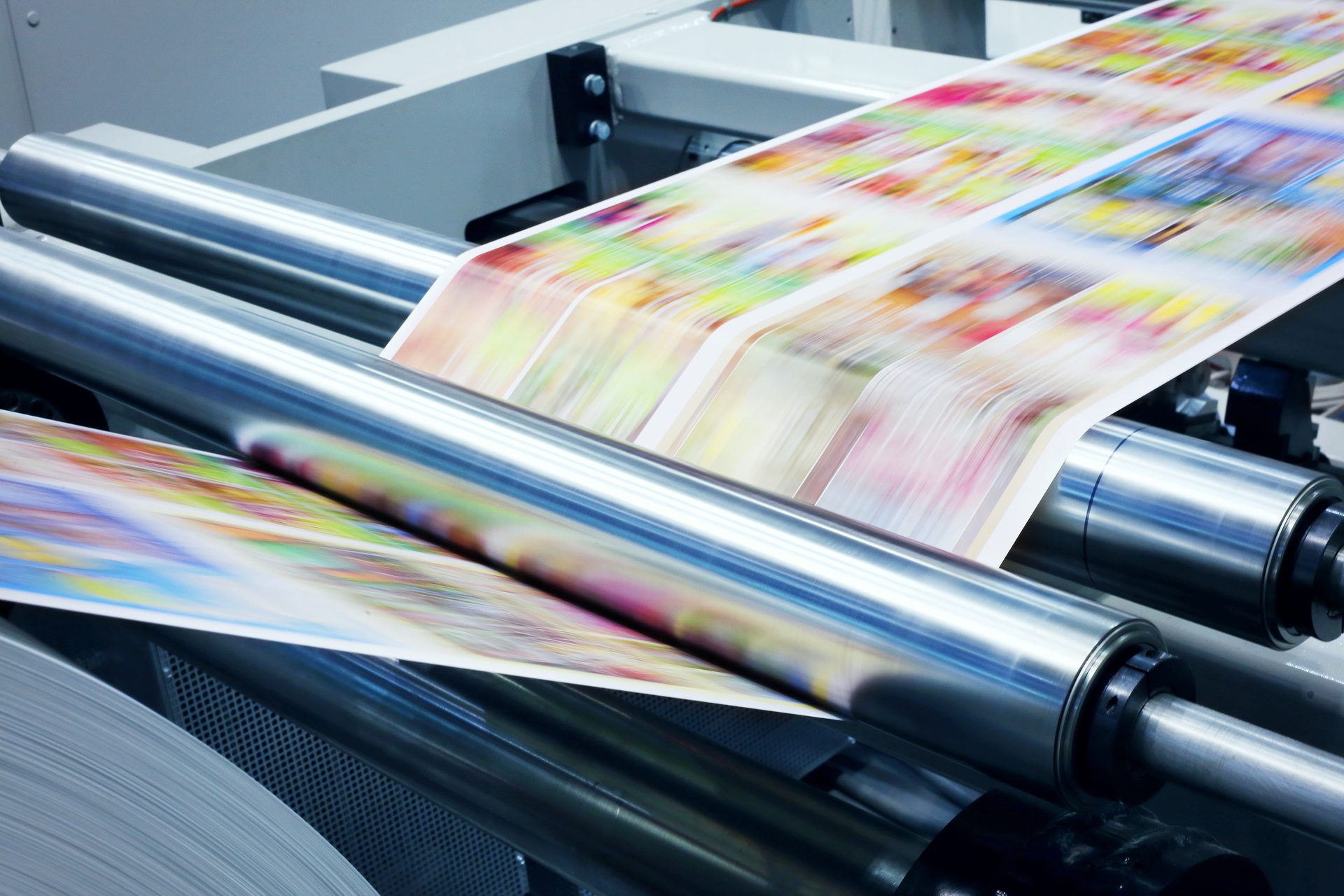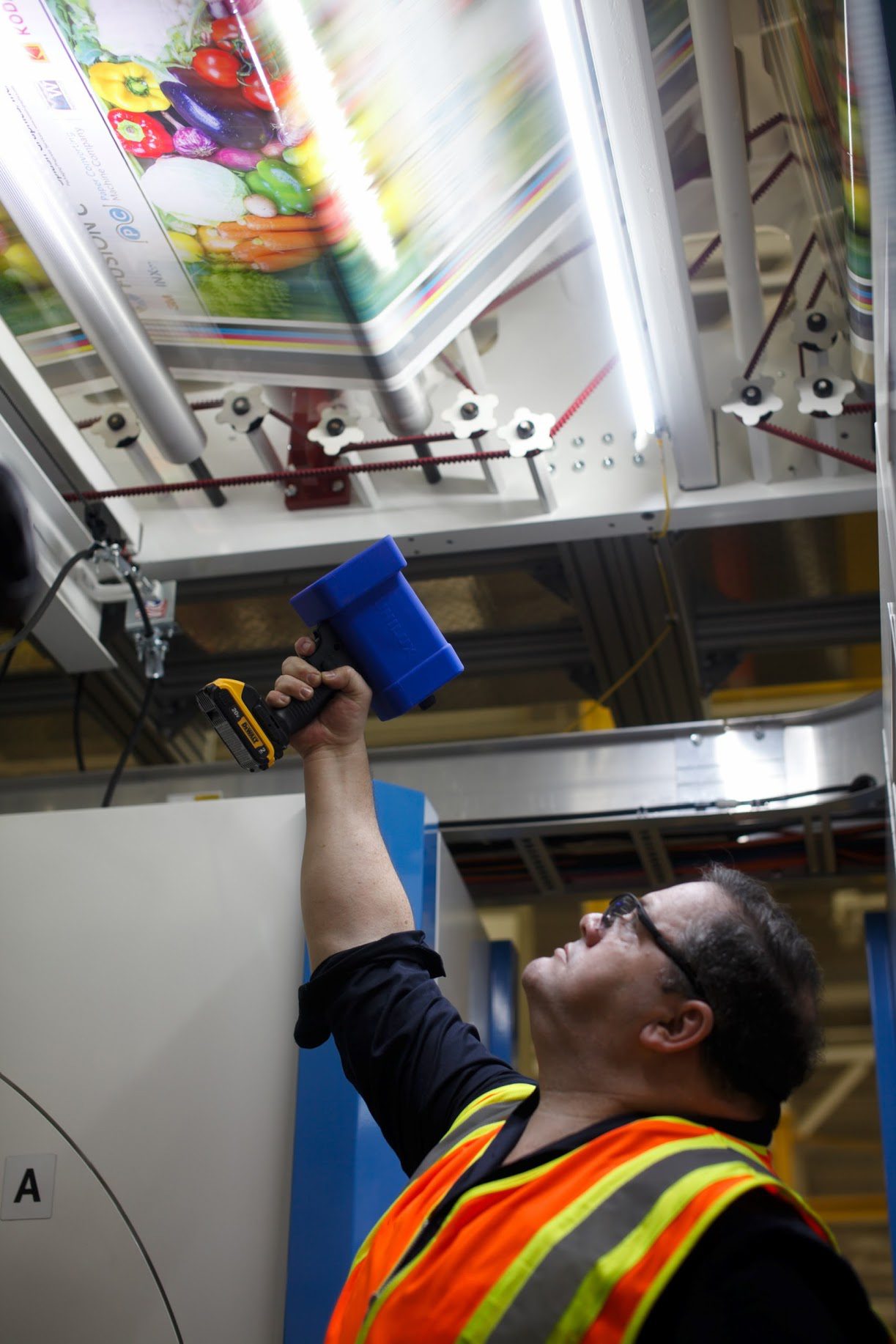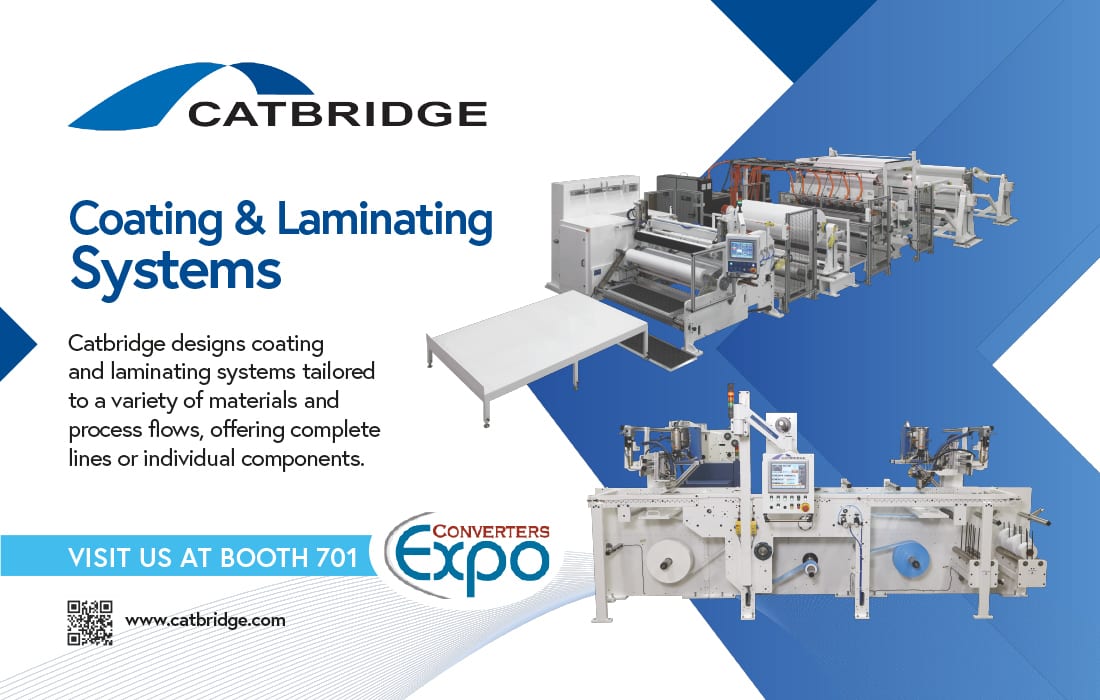Seeing Beyond the Blur with Stroboscopic Technology
In this insightful article, Tom Herold of Unilux explains the unparalleled advantages of stroboscopic inspection for print professionals working with high-speed roll-to-roll presses.
By Tom Herold, VP of Sales for the Americas, Unilux


Nature's Lesson in Perception: The Hummingbird
Have you ever watched a hummingbird hover near a flower? To the naked eye, its wings appear as nothing more than a blur — moving so rapidly that they beat 50-80 times per second. Yet occasionally, in just the right light, you might catch a fleeting glimpse of those wings frozen in position. That momentary clarity reveals the true beauty and complexity of the bird's movement.
This natural phenomenon perfectly illustrates what happens in stroboscopic inspection. Just as the right lighting conditions can momentarily "freeze" a hummingbird's wings, stroboscopic technology allows us to capture crystal-clear images of objects moving incredibly fast on production lines as if they are standing still.
Stopping Time on High-Speed Production Lines
Imagine being able to freeze motion on a high-speed printing press running at hundreds of feet per minute, allowing you to spot the tiniest imperfection with nothing more than your naked eye. This isn't science fiction — it's the remarkable capability of stroboscopic inspection technology.
ADVERTISEMENT
What is Stroboscopic Inspection?
At its core, stroboscopic inspection uses precisely timed light pulses to create an optical illusion that “freezes” fast-moving objects. By synchronizing high-frequency flash rates with the speed of a production line, the human eye perceives motion as stopped — similar to how a video camera captures individual frames to create smooth footage.
Like capturing the perfect moment when a hummingbird's wings are fully extended, stroboscopic inspection reveals what would otherwise remain hidden in the blur of motion. For print professionals working with high-speed roll-to-roll presses, this technology transforms quality control from a guessing game into a precise science.
When Stroboscopic Inspection Outperforms High Tech Solutions
The Speed Advantage
“The faster, the better” is a fundamental truth of stroboscopic inspection. Unlike other inspection methods that struggle with increasing speeds, stroboscopic systems actually perform optimally at higher velocities, making them ideal for modern high-throughput production environments.
Detecting What Matters
Stroboscopic inspection excels at revealing various visible defects that don't require magnification, speeding reaction time by eliminating the need to wait for a camera-based system.
- Missing print elements
- Hickeys and smudges
- Registration issues
- Pinholes
Versatility
Handheld inspection strobes offer unparalleled flexibility and the freedom to investigate, allowing operators to:
- Freely move around the press to pinpoint defect sources
- Dial in precise flash rates to perfectly freeze any motion
- Isolate specific areas for targeted adjustments
- Quickly identify root causes of quality issues
Mounted stroboscopic inspection systems provide continuous quality assurance by:
- Automatically synchronizing with press speeds (even during acceleration and deceleration)
- Requiring minimal operator intervention
- Maintaining consistent frozen-motion visibility throughout production
- Providing crucial final verification at the rewind end where all colors converge
The Perfect Recipe for Real-Time Quality Control
Stroboscopic inspection thrives in environments with:
- Consistent repeat sizes
- Higher press speeds
- Web widths that complement the strobe's coverage area
Overcoming Limitations
While incredibly effective, stroboscopic inspection does face certain challenges:
- Performance decreases at extremely slow speeds
- Very large repeat lengths can be problematic
- Some applications require supplemental inspection methods
Consider a dog food bag with a 24-inch repeat length running at 400 feet per minute. Traditional stroboscopic methods alone might struggle to freeze motion effectively. The solution? Pairing the strobe with a camera system to capture high-resolution images of print quality, allowing operators to take corrective action.
Why Printers Choose Stroboscopic Inspection
Three compelling advantages make stroboscopic inspection a cornerstone of quality control:
- Unmatched Simplicity: Easy implementation with minimal training required
- Cost-Effectiveness: The most economical inspection method available
- Proven Results: Consistently reliable performance in real-world applications
Just as we marvel at the precision of a hummingbird's wings when we can finally see them clearly, stroboscopic inspection reveals the true quality of printed products by removing the blur of high-speed production. What was once invisible becomes strikingly apparent, allowing for immediate correction and consistent quality.
Upgrading Your Inspection Capabilities
Whether considering inspection strobes for the first time or replacing outdated xenon strobes, Unilux’s local sales teams can assess specific needs by evaluating:
- Minimum and maximum repeat sizes
- Press speeds
- Web widths
For applications requiring magnification or detection of microscopic defects, Unilux offers complementary camera-based inspection systems that work alongside stroboscopic technology.
The Inspection Spectrum: Finding Your Perfect Solution
From the simplicity of the human eye to the comprehensive coverage of 100% inspection systems, stroboscopic technology occupies a sweet spot — combining accessibility, effectiveness, and value in a solution that continues to evolve with printing technology.

Handheld inspection strobes offer unparalleled flexibility and the freedom to investigate, allowing operators to freely move around the press to pinpoint defect sources.
Courtesy of Unilux


